Commuting Across and Exploring the Bay Area Will Become More Accessible to Millions of Residents Via 2,604 Miles of Connected Trails

What if you could explore—without ever leaving a trail—the Golden Gate Bridge, wine country, the Bay Area’s scenic shorelines, and the diverse urban, suburban and rural communities across nine counties? Whether you are a resident, tourist, local employee or local employee, you could enjoy the sights and commute to everyday destinations through safe walking, biking and wheelchair routes.
This vision is becoming a reality with nearly 60% of the 2,604-mile Bay Area regional trail network complete. Leading the charge is the Bay Area Trails Collaborative, a group of more than 50 businesses, agencies and organizations that is chaired by Rails-to-Trails Conservancy (RTC).
The Collaborative and RTC released the first comprehensive map detailing a plan to connect this trail and active transportation network for the benefit of all Bay Area communities.
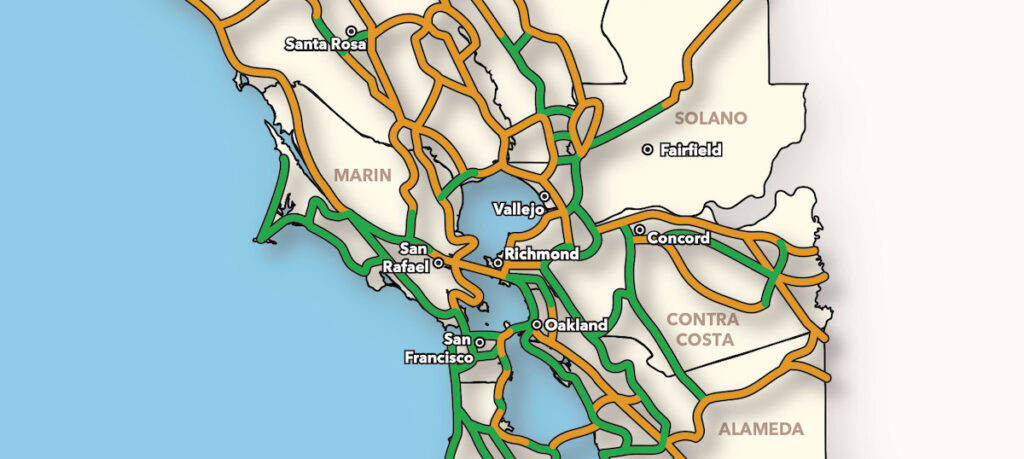
To explore the current and proposed trails in this network, visit: https://www.railstotrails.org/bayareatrailsmap
Increasing Local Active Transportation Access for All Bay Area Residents
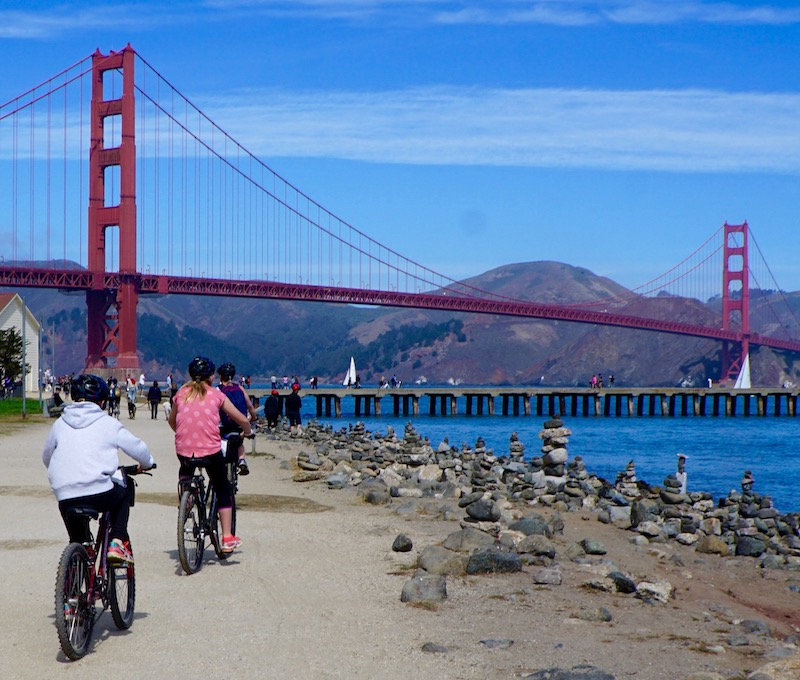
When fully developed, nearly 9 in 10 of the Bay Area’s residents will live within 2 miles of the proposed trail network. Opportunities to commute to work and school via trails will also increase, with almost 4 million Bay Area jobs and 1,525 schools based within 2 miles of the network.
Most importantly, the trail network will also reach 68% more residents who live in disadvantaged communities around the Bay Area—increasing access to safe walking and bicycling facilities and trails in their neighborhoods.
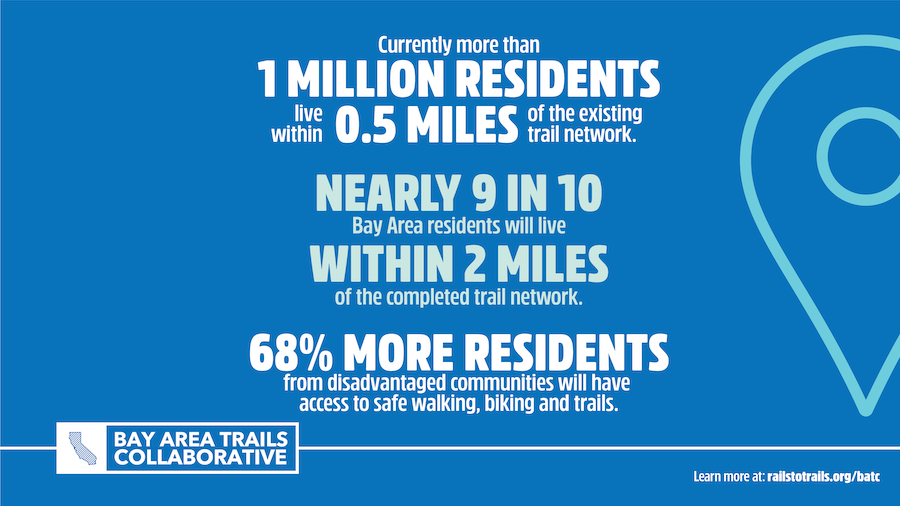
Trail Network Has the Potential to Inject Billions of Dollars Into the Economy
A recent RTC study attributes $34.1 billion annually in economic activity across the country to active transportation, with the potential to grow to $138.5 billion annually as the connectivity of trail and active transportation networks improves.
Based on this study, the state’s walking and bicycling facilities and trail networks—including the Bay Area regional trail network—could collectively generate as much as $6.62 billion each year for California’s economy.
Trail networks are also popular travel destinations with the potential to increase the state’s tourism economy. Through the Bay Area regional trail network, people will be able to walk, bike and roll to world-class attractions like the Golden Gate Bridge (via the 400-mile Bay Area Ridge Trail), wine country (via the 47-mile Napa Valley Vine Trail) and northern California’s famous shoreline (via the 500-mile San Francisco Bay Trail).
According to the East Bay Regional Park District, their 73 parks and 1,300 miles of trails had an annual pre-pandemic rate of 25 million visitors per year—more than some amusement parks and entertainment destinations across the state—with trail use increasing dramatically during the pandemic.
Once the East Bay Regional Park District and the many other trails are connected to this 2,604-mile regional trail network, it will increase access to many of the Bay Area’s most popular destinations—offering new opportunities for the tourism industry and visitors to explore.
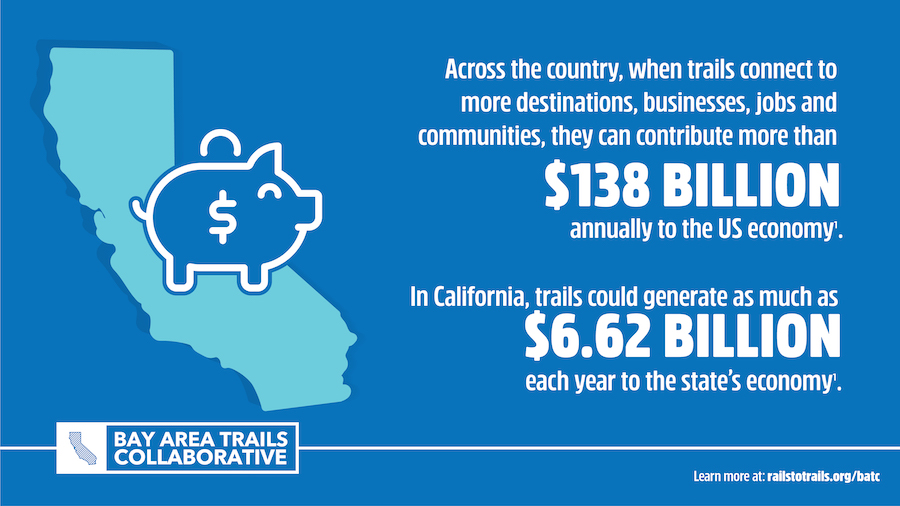
An Innovative Solution to Help Reach California’s Climate Goals
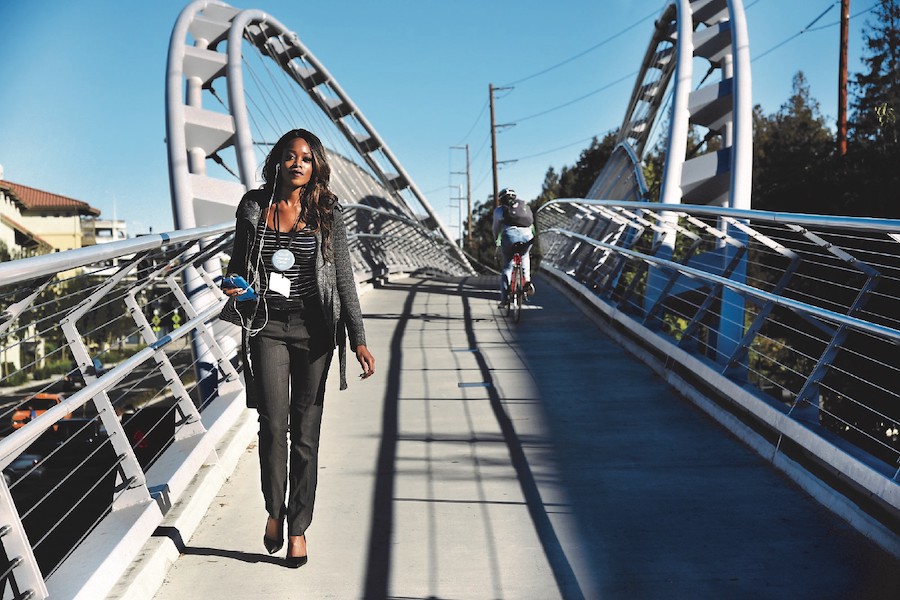
With millions of jobs and residents based within 2 miles of the proposed trail network, it creates an opportunity for people to replace short trips with walking and cycling while reducing car emissions in the region.
Currently about 40% of California’s carbon emissions come from transportation, according to the California Air Resources Board. However, half the country’s car trips are within a 20-minute bike ride and a quarter are within a 20-minute walk, according to a 2017 National Household Travel Survey.
“The expansive Bay Area regional trail network offers an eco-friendly route for short trips, whether you’re commuting, exploring the region’s natural scenery or running errands,” said Laura Cohen, RTC’s Western director.
Trail networks can be important solutions to help achieve California’s ambitious climate goals.
Completing the Network
The Bay Area regional trail network, which consists of recreational and multiuse trails, contains critical gaps that need to be filled to fully harness the benefits the network can generate related to tourism, economic development, climate change and active transportation.
However, current state funding for trails offers only a small fraction of what is needed to create these transformative economic opportunities for the region. Funding is often inconsistent from year to year, which impacts trail development and maintenance and negatively impacts progress on critical projects like the Bay Area regional trail network.
To deliver this trail network and its considerable benefits to residents, businesses and the economy, substantially more funding is needed.
“Trail networks can deliver powerful returns on investments for states—generating billions of dollars in economic impact and providing the necessary infrastructure so that more people can walk and bike where they need to go, instead of driving,” said Cohen.
To explore the Bay Area regional trail network map and learn more about the Bay Area Trails Collaborative, visit: railstotrails.org/batc.
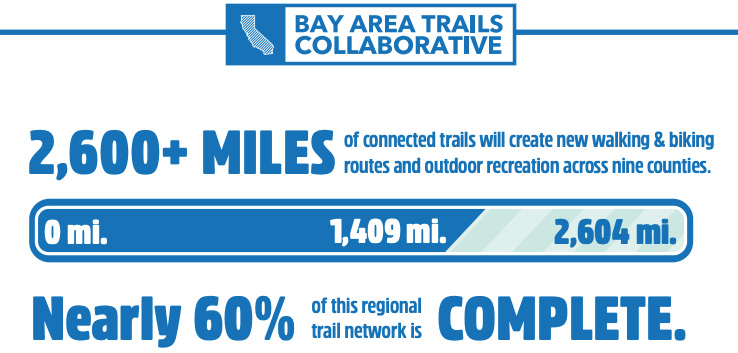

Donate
Everyone deserves access to safe ways to walk, bike, and be active outdoors.
